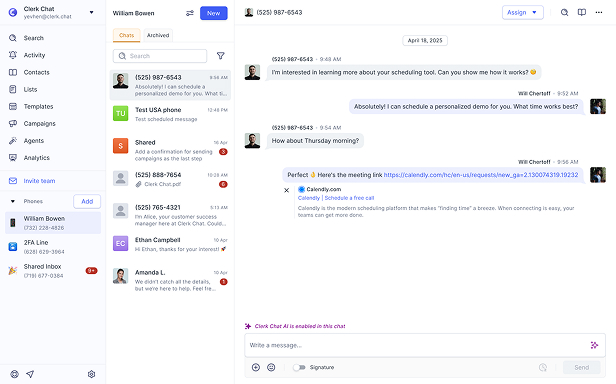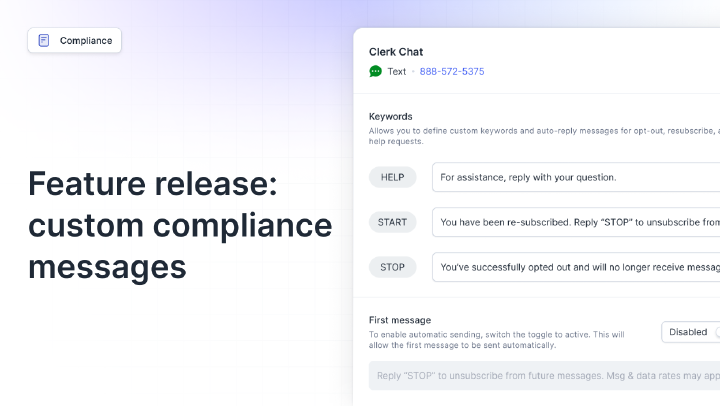Voice AI
[vɔɪs ˌeɪˈaɪ]Voice AI is a technology that enables computers to process and generate human speech, facilitating interactive voice-based communications.
It combines speech recognition, natural language processing, and synthesis to create natural dialogues. This supports applications from virtual assistants to automated customer service.
Why Voice AI Matters
Voice AI revolutionizes accessibility by allowing hands-free interactions, benefiting users with disabilities or in mobile scenarios, thus broadening reach and inclusivity.
In business, it streamlines operations, handling inquiries at scale without agents, leading to cost reductions and faster resolutions. This directly correlates with higher customer satisfaction, as voice interfaces feel more personal than text.
It also captures rich data from intonations and speech patterns, offering insights into sentiment that inform service improvements and personalization strategies.
As remote work persists, Voice AI supports seamless collaboration tools, boosting productivity. Overall, its integration yields tangible outcomes like 20-40% efficiency gains, positioning it as essential for competitive customer engagement.
How Voice AI Works
Voice AI operates through a pipeline of technologies that convert speech to actions and back to speech.
Speech Input: Captures audio via microphones, using automatic speech recognition (ASR) to transcribe spoken words into text, handling accents and noise.
Language Understanding: Applies natural language understanding (NLU) to parse the text, extracting intent, entities, and context for comprehension.
Processing and Decision: Dialogue management determines the response based on predefined logic or ML models, querying databases if needed.
Response Generation: Natural language generation (NLG) forms the textual reply, which text-to-speech (TTS) converts to audio, mimicking human tones.
Output Delivery: Synthesizes and plays the voice response, closing the loop.
Feedback Integration: Logs interactions for ML to improve accuracy, adapting to user patterns over time.
In business contexts, Voice AI integrates with platforms for calls or messaging, automating tasks like scheduling while escalating complexities to humans.
This end-to-end process ensures responsive, natural exchanges.
Best Practices with Voice AI
Focus on Ethical Data Handling: Obtain explicit consent for voice recordings and anonymize data to protect privacy and comply with regulations.
Train for Diversity: Use datasets with varied accents, languages, and demographics to reduce biases and improve recognition accuracy.
Incorporate Noise Mitigation: Deploy cancellation techniques to maintain performance in real-world, variable environments.
Provide Clear User Guidance: Inform users of capabilities and limitations upfront to manage expectations and reduce errors.
Enable Multimodal Support: Combine with text or visuals for fallback, enhancing usability in diverse scenarios.
Monitor and Update Regularly: Review analytics on misrecognitions and update models to adapt to evolving speech patterns.
Ensure Security Measures: Implement encryption and authentication to safeguard against voice spoofing and data breaches.
Real world examples
- Finance
Banks use Voice AI for secure transactions, reducing fraud and speeding verifications by 40%.
Read more - Healthcare
Providers deploy Voice AI for patient check-ins, improving adherence and cutting no-shows by 25%.
Read more
Common misconceptions
It simulates emotions but struggles with nuanced cultural or situational subtleties, requiring ongoing advancements.
It processes sensitive voice data, necessitating robust encryption and consent to prevent misuse like deepfakes.
Background noise can degrade accuracy, though noise cancellation helps, it's not infallible.
It applies broadly in business for customer support, healthcare reminders, and internal tools.
Related terms
In this article:
Ready to use your business number for text messaging?
Thousands of businesses are already experiencing the power of conversational messaging through SMS. Join us. Free trial and paid tiers available.
Get StartedFAQ
Have questions? We've got answers.
Find what you need quickly and clearly with our most frequently asked questions.
Voice AI is technology that allows systems to interpret spoken language and respond with synthesized speech, using components like speech recognition and NLP. It applies in customer support for hands-free queries, accessibility for voice commands, and automation in call centers. With high accuracy rates over 95% in ideal conditions, it enhances interactions, making services more inclusive and efficient.
Select a platform with ASR and TTS capabilities, integrate via APIs into apps or phone systems. Train models on domain-specific audio data for accuracy. Test in real scenarios, then deploy with monitoring. Clerk Chat offers Voice AI features, enabling voice-enabled messaging that integrates with existing numbers for quick adoption in business communications.
Entry-level solutions cost $50-200/month, with per-minute fees at $0.005-0.02 for processing. Resources include audio datasets for training (hours to days) and developers for setup. Benefits like 30% faster resolutions often yield ROI within quarters, especially in high-volume sectors.
Voice AI combines recognition with understanding and generation for full conversations, unlike basic recognition that just transcribes. Text-based lacks audio handling. Voice AI manages accents and noise better, ideal for telephony, while text suits chat; hybrids like Clerk Chat's Voice AI bridge both for versatile use.
Address GDPR for voice data as biometric info, requiring consent and secure storage. Comply with TCPA for automated calls, including do-not-call lists. Mitigate deepfake risks with authentication. Platforms provide logging and opt-outs to avoid fines, emphasizing ethical data use.
Train on diverse accents and languages for inclusivity. Incorporate noise reduction algorithms. Design intuitive prompts and confirmations. Analyze usage logs to refine models. Balance automation with human handoff for complex queries, achieving satisfaction rates up to 90%.




